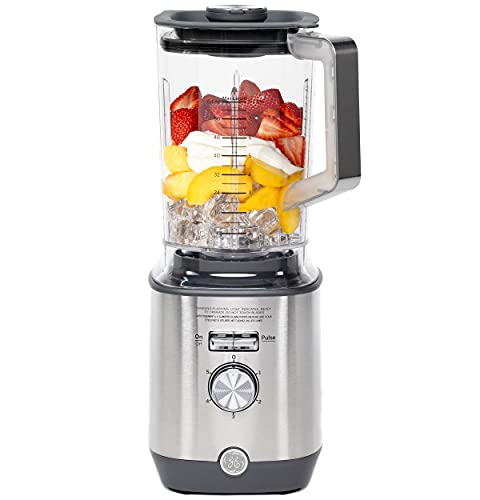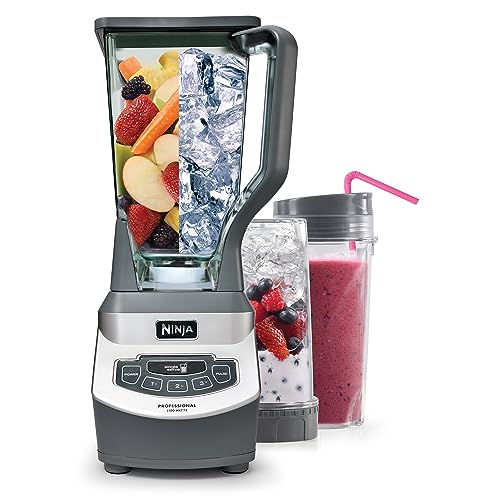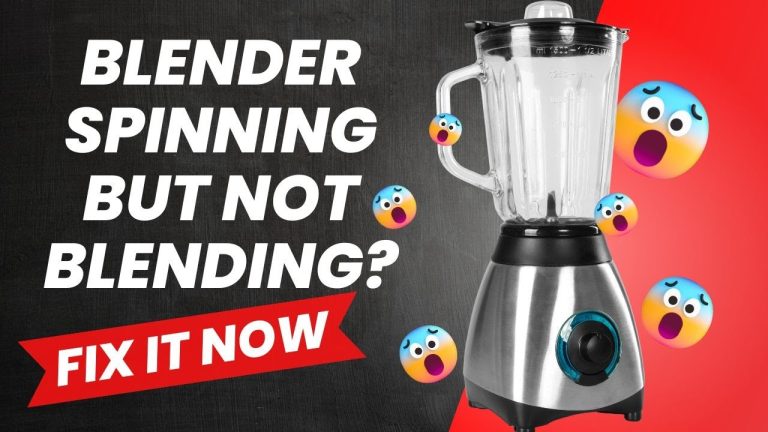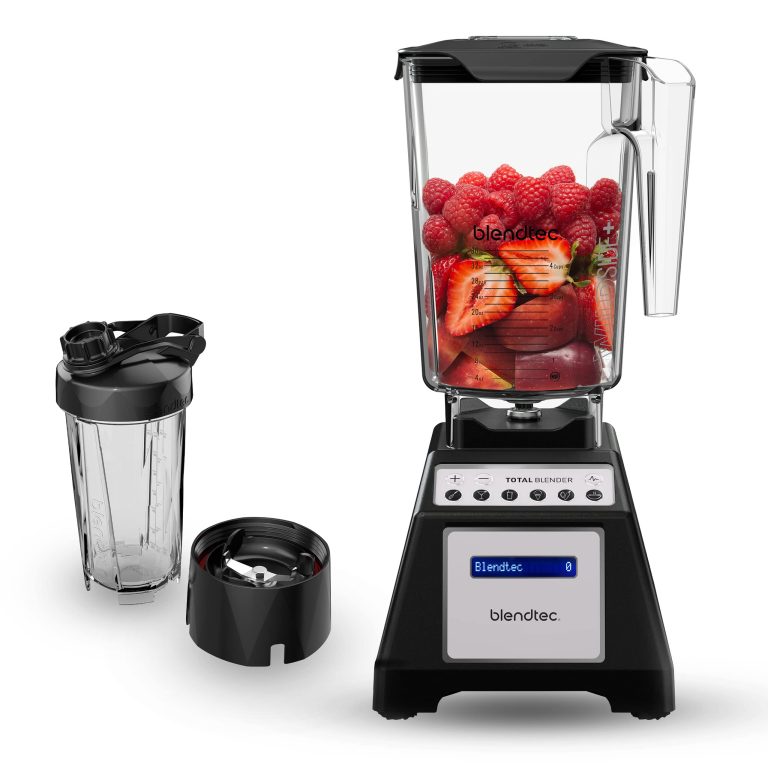Blender Vs Immersion Blender: Unleash the Battle of Blending Giants
Blender and immersion blender are two different kitchen appliance used for different blending purposes. Blending is a common kitchen task, whether you’re making smoothies, pureeing soups, or creating homemade sauces.
There are two main types of blenders commonly used in the kitchen: traditional blenders and immersion blenders. Traditional blenders, also known as countertop blenders, are typically the larger option and are designed to handle a wide range of blending tasks.
Immersion blenders, on the other hand, are hand-held devices that are submerged directly into the food being blended, providing a more convenient and compact option. Both blenders have their advantages and disadvantages, and your specific needs will ultimately determine which one is right for you. We will compare and contrast the features and functionalities of blenders and immersion blenders to help you make an informed decision.
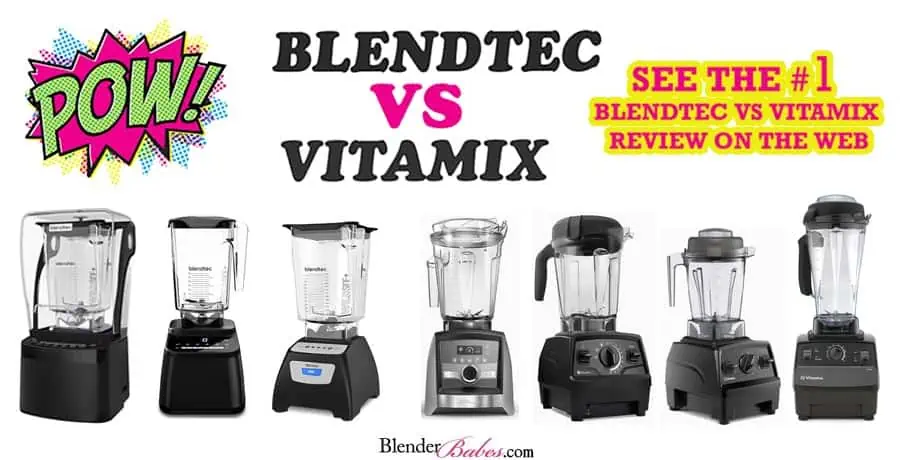
Credit: www.blenderbabes.com
The Battle Begins: Blender Vs. Immersion Blender
Blenders and immersion blenders are two common kitchen appliances known for their blending capabilities. While both are used for the same purpose, they differ in design, functionality, blending power, and performance. Let’s dive into the details of Blender vs. Immersion Blender to help you determine which one is best suited for your needs.
Design And Functionality
When comparing blenders and immersion blenders, one of the first things to consider is their design and functionality. Blenders typically consist of a base with controls, a glass or plastic pitcher, and a lid with a removable center cap for adding ingredients while blending. On the other hand, immersion blenders, also known as hand blenders or stick blenders, are handheld devices with a long shaft that contains the blending blades at the end.
Blenders are designed for larger blending tasks, such as making smoothies, crushing ice, or preparing soups. They offer versatility in terms of capacity and are ideal for blending larger quantities. Immersion blenders, on the other hand, are more compact and easier to store. They are perfect for smaller blending tasks, such as pureeing soups, making sauces, or blending small batches of smoothies.
In summary, blenders are bulkier but offer greater capacity, while immersion blenders are handheld and more suitable for smaller blending tasks.
Blending Power And Performance
When it comes to blending power and performance, blenders and immersion blenders have their unique advantages. Blenders are equipped with powerful motors, usually ranging from 500 to 1500 watts, capable of crushing ice, grinding nuts, and blending tough ingredients with ease. The sharp blades and high-speed settings of blenders allow for a smooth and consistent blend.
On the other hand, immersion blenders may have slightly lower wattages compared to blenders, typically ranging from 200 to 500 watts. However, their blending capabilities should not be underestimated. Immersion blenders excel in their ability to blend hot liquids directly in the pot or pan without the need for transferring to a blender pitcher. Their compact size and easy maneuverability make them a convenient choice for quick and efficient blending.
| Blender | Immersion Blender |
|---|---|
| Powerful motors (500-1500 watts) | Compact and lightweight |
| Large blending capacity | Perfect for small blending tasks |
| Suitable for tough ingredients and crushing ice | Efficient for blending hot liquids directly in the pot |
In conclusion, blenders are known for their powerful motors and large blending capacity, while immersion blenders excel in their compact size and ability to blend hot liquids directly in the pot.
In The Kitchen Arena: Practical Uses
When it comes to blending ingredients in the kitchen, two popular choices are the traditional blender and the immersion blender. Each has its own unique features and applications that make them useful tools for various culinary tasks. Let’s delve into the practical uses of both blenders and explore their differences!
Traditional Blender Applications
The traditional blender, also known as a countertop blender, is a versatile appliance designed for a wide range of tasks. Here are some common applications:
- Smoothies and Shakes: Quickly blend fruits, vegetables, and liquids into a smooth and creamy consistency.
- Soups and Sauces: Puree cooked ingredients to create smooth and velvety soups or sauces.
- Dips and Spreads: Blend ingredients like beans, avocados, or cheese to prepare delicious dips and spreads.
- Batters and Doughs: Mix batter for pancakes, waffles, or bread dough effortlessly.
- Crushing Ice: Crush ice cubes into fine pieces for refreshing beverages or icy desserts.
Immersion Blender Applications
The immersion blender, also known as a hand blender or stick blender, offers convenience and precise control. Let’s explore some of its practical applications:
- Soups and Purees: Easily blend hot soups or create creamy purees right in the pot without transferring to a separate container.
- Sauces and Dressings: Effortlessly emulsify dressings and sauces, such as mayonnaise or vinaigrettes.
- Smoothies and Protein Shakes: Blend smoothies directly in your glass or protein shakes in a portable container.
- Baby Food: Prepare nutritious and flavorful purees for your little ones with ease.
- Whipping Cream: Beat cream into fluffy peaks for desserts or toppings in no time.
As you can see, both blenders have their own specialties when it comes to practical uses in the kitchen. It’s important to consider your specific needs and preferences before making a choice. Traditional blenders are ideal for larger quantities and more complex recipes, while immersion blenders offer convenience and versatility for smaller batches and precise blending tasks.
The Showdown: Pros And Cons
In the world of kitchen appliances, blenders are a staple. However, when it comes to choosing the right type of blender, the decision between a traditional blender and an immersion blender can be a tough one. Both have their own unique set of advantages and drawbacks. In this showdown, we’ll compare the pros and cons of traditional blenders and immersion blenders to help you make the right choice for your kitchen needs.
Advantages Of A Traditional Blender
A traditional blender, also known as a countertop blender, offers several advantages:
- Great for handling large volumes of ingredients
- Capable of crushing ice and other hard ingredients
- Ideal for making smoothies, soups, and sauces
Advantages Of An Immersion Blender
An immersion blender, also called a hand blender, comes with its own set of advantages:
- Compact and easy to store
- Convenient for blending directly in pots, cups, or pitchers
- Allows for greater control and precision in blending
Drawbacks Of Traditional Blenders
While traditional blenders have their strengths, there are also drawbacks to consider:
- Take up more countertop or storage space
- May not be as versatile for different cooking methods
- Requires more effort for cleaning and maintenance
Drawbacks Of Immersion Blenders
Immersion blenders have their own limitations as well:
- Less ideal for handling large quantities of ingredients
- Not suitable for heavy-duty blending tasks like crushing ice
- Can be more tiring to use for longer blending sessions
Making The Right Choice: Buying Guide
When it comes to choosing between a traditional blender and an immersion blender, it’s important to consider your specific needs and preferences. Both types of blenders have their own advantages and disadvantages, so understanding the key differences will help you make an informed decision. In this buying guide, we will explore the considerations for both traditional and immersion blenders, helping you find the perfect blender for your kitchen needs.
Considerations For Traditional Blenders
Traditional blenders, also known as countertop blenders, are versatile kitchen appliances that offer a range of functionalities. Here are a few factors to consider when choosing a traditional blender:
- Power: Traditional blenders are typically more powerful than immersion blenders, making them ideal for tackling tough ingredients and blending large quantities. Look for blenders with high wattage and efficient motor systems for optimal blending performance.
- Capacity: Traditional blenders often come with larger containers, allowing you to prepare bigger batches of smoothies, soups, or sauces. Consider your cooking needs and the number of servings you plan to make when selecting the blender capacity.
- Functions and settings: Many traditional blenders offer multiple speed options and pre-programmed settings for different blending tasks. Determine which features are essential for your culinary adventures and choose a blender that fulfills those requirements.
- Versatility: Traditional blenders can handle a wide variety of tasks beyond blending, including chopping, pureeing, and even kneading dough. If you require a blender that can perform multiple functions, opt for a model that comes with additional attachments or accessories.
- Cleaning and maintenance: Consider how easy it is to clean a traditional blender. Removable blades and dishwasher-safe parts can make the cleaning process much simpler and more convenient.
Considerations For Immersion Blenders
Immersion blenders, also known as hand blenders or stick blenders, provide a more compact and portable blending solution. Here are some factors to consider when buying an immersion blender:
- Portability: Immersion blenders are lightweight and easy to handle, allowing for greater control and maneuverability when blending. They are a convenient option for blending directly in pots, bowls, or cups.
- Simplicity: Immersion blenders are straightforward to use, with a simple on/off button and variable speed control. They are perfect for quick blending tasks, such as making sauces, soups, or smoothies.
- Space-saving: If you have limited kitchen space or prefer a clutter-free countertop, an immersion blender is a compact option that can be conveniently stored in a drawer or cabinet.
- Easy cleaning: Immersion blenders are usually easy to clean since they have removable blending attachments that can be washed separately. Look for models that have dishwasher-safe parts for added convenience.
- Price: Immersion blenders are generally more affordable compared to traditional blenders. If you’re on a budget or don’t require the extensive features of a countertop blender, an immersion blender might be the perfect choice for you.
The Verdict: Which One Reigns Supreme?
Comparing the Blender and Immersion Blender reveals distinct strengths. The Blender is ideal for larger quantities, while the Immersion Blender excels at versatile and convenient blending tasks. Ultimately, both have their place in the kitchen, suited for different needs.
Factors To Consider
Before we can decide on the ultimate winner between a blender and an immersion blender, let’s examine a few important factors:
- Functionality: A blender is designed for more heavy-duty tasks such as crushing ice and blending larger quantities of ingredients, while an immersion blender offers greater flexibility for blending directly in pots, bowls, or even cups.
- Convenience: While both blenders have their advantages, an immersion blender takes the lead in terms of convenience. Its handheld design allows for easy maneuvering and storage, without the need for transferring ingredients to a separate container.
- Space-saving: If you have limited counter or storage space, an immersion blender is a clear winner. With its compact size and versatility, it can replace the need for a countertop blender altogether.
- Cost: When it comes to cost, immersion blenders usually have a lower price point compared to high-end countertop blenders. However, it is important to consider your specific needs and the durability of the blender before making a decision.
After considering these factors, it is clear that there is no definitive winner between a blender and an immersion blender. It all depends on your specific needs and preferences.
If you frequently blend large quantities of ingredients or require more heavy-duty functionality, a blender may be the best choice for you. Its powerful motor and larger capacity make it ideal for tasks such as making smoothies, soups, or crushing ice.
On the other hand, if you value convenience, versatility, and space-saving, an immersion blender may be the perfect fit. Its handheld design allows for easy blending directly in containers, making it ideal for tasks like pureeing soups, sauces, and even small batches of smoothies.
Final Thoughts
In conclusion, whether you choose a blender or an immersion blender depends on your specific needs and priorities. Consider the functionality, convenience, space-saving, and cost factors before making a decision. Ultimately, both types of blenders have their own strengths and can be valuable additions to your kitchen arsenal.

Credit: www.turbosquid.com

Credit: www.turbosquid.com
Frequently Asked Questions For Blender Vs Immersion Blender
What Is A Blender And How Does It Work?
A blender is a kitchen appliance used to puree or blend ingredients. It works by rotating sharp blades at high speeds, creating a vortex that blends and mixes the ingredients together.
What Is An Immersion Blender And How Does It Differ From A Regular Blender?
An immersion blender, also known as a hand blender, is a handheld kitchen tool used for blending and pureeing ingredients directly in the pot or container. Unlike a regular blender, it eliminates the need to transfer the ingredients to a separate container.
Can I Use A Blender For The Same Tasks As An Immersion Blender?
While a regular blender can perform similar tasks as an immersion blender, it may not be as convenient. An immersion blender offers greater control and is ideal for tasks like making pureed soups, sauces, and smoothies directly in the pot or container.
Are There Any Advantages To Using A Blender Instead Of An Immersion Blender?
Yes, blenders are generally more powerful, making them suitable for tasks like crushing ice, making frozen drinks, and blending larger quantities of ingredients. They also often come with additional features like preset functions and variable speed settings.
Conclusion
Both blenders have their strengths and weaknesses. The traditional blender is versatile and suitable for larger batches, while the immersion blender offers convenience and easy cleanup. Your choice should depend on your specific needs and kitchen habits. Ultimately, both blenders can be valuable tools in any kitchen.


